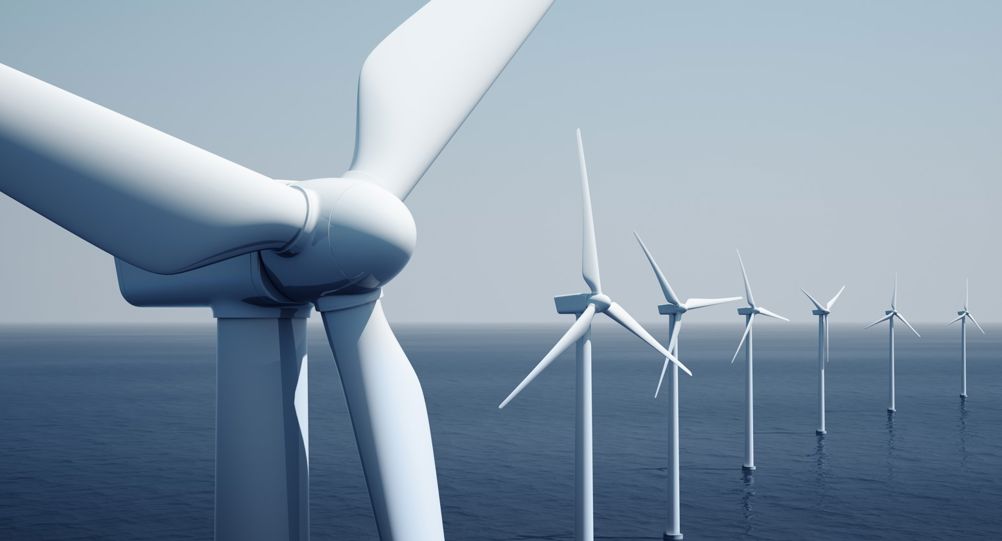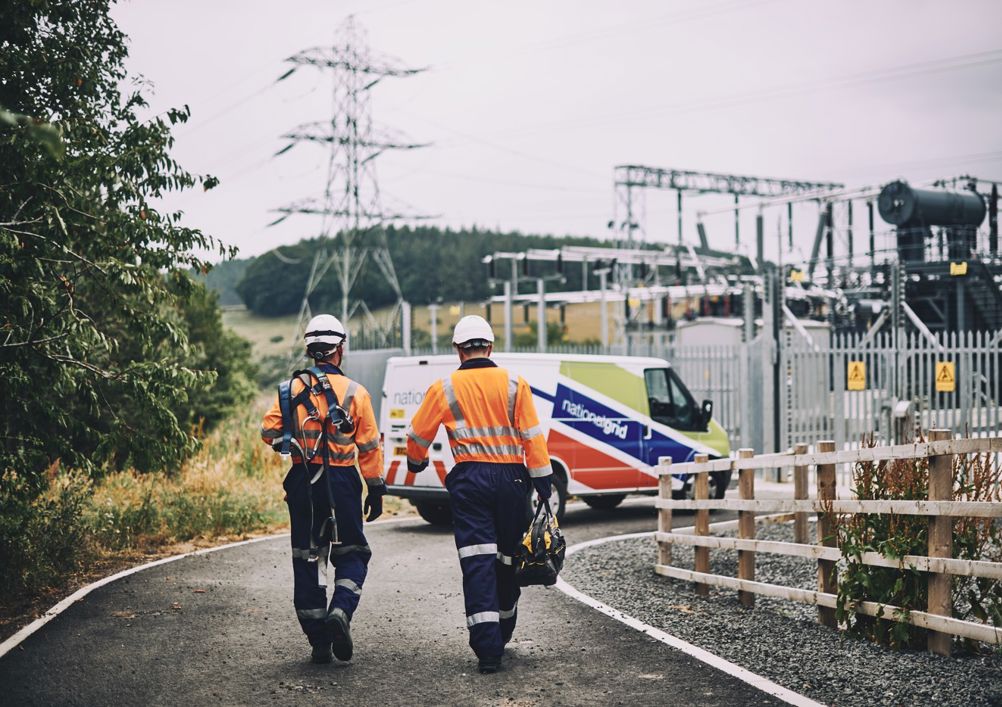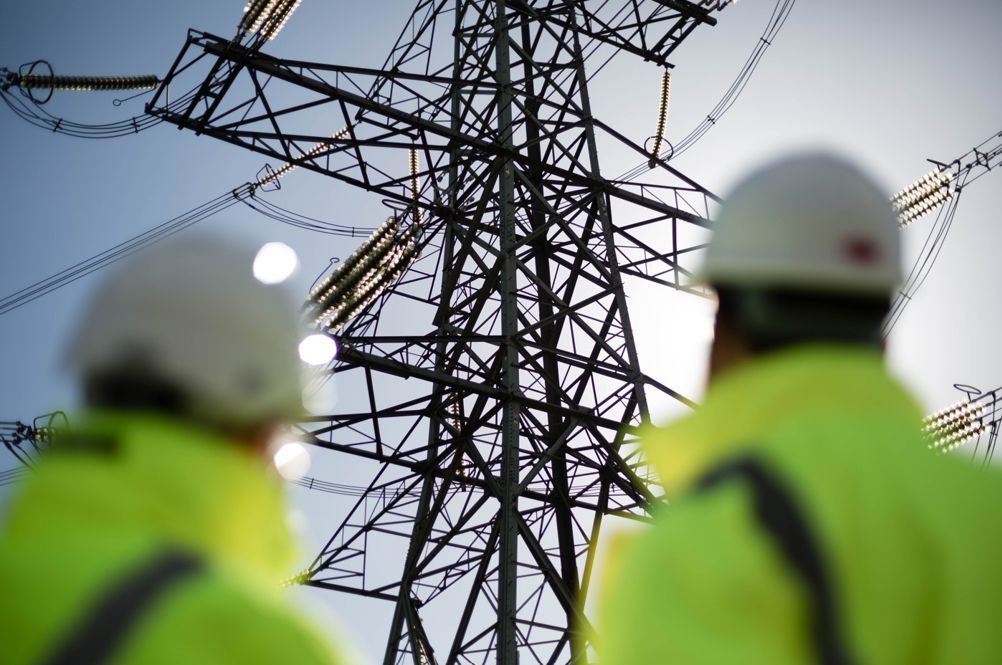It’s a well-worn trope that Brits love a queue. From the celebrity-studded line that stretched halfway through Central London in the lead up to the Queen’s funeral, to the cheery collection of tennis diehards that forms overnight at Wimbledon each July (The Queue©, complete with a 19-page Queue Guide this year), orderly waiting your turn is embraced by the masses as some strange hybrid of patriotic duty and national pastime.
However, there is currently one queue in Britain that is less jolly hockey sticks and stiff upper lip, and more environmental/economic disaster. According to Bloomberg research, there is more than 200GW of renewable energy awaiting connection to the UK grid – around four times the total capacity of renewables added since 1992.
In 2022, 164GW of new connection requests were received in the year to October, as per figures from the Energy Networks Association (ENA), with wait times of up to 15 years quoted for some parties. Those gigawatts include projects of varying sizes, at various stages of development. Some of them already have planning consent, others will never come close to fruition. As it stands, the queue works largely on a first-come-first-served basis, but there is a growing realisation that this simply cannot continue.
According to Rosin Quinn, National Grid’s director of Customer Connections, three interlinking factors are impacting the connections queue: the structure of the market, the nature of the contract itself, and how the power system is designed. Firstly, the market is open to virtually anyone who wants a connection. While this is a positive thing in many ways, bringing liquidity, innovation and competition, it also creates bottlenecks. “If you want to apply to get a connection, there are very limited barriers to entry and so you can have this really, really oversubscribed market,” Quinn told The Engineer. “The conversion rate between the people who will contract and who actually connect is really quite low. Only about 20 per cent of those projects will go forward.”

Secondly, the contract customers sign with National Grid contains several technical milestones that the customer is obligated to meet. However, Quinn says the consequences of missing these milestones are minimal and that National Grid is limited in the enforcement action it can take when customers fall short. “If you miss a milestone or miss multiple milestones, it’s really, really hard to take any action to move you out of the way of other customers,” she said. “And that would probably be ok if you had more natural constraints on how many people could apply…but it’s really easy to get in and then it’s really easy not to move.”
Quinn was formerly head of National Control at National Grid ESO (Electricity System Operator), which has been hived off since 2019 from the electricity transmission (ET) side of National Grid that she now works on. In February 2023, ESO published a five-point plan to help reform the connections process and get the queue moving. Point one was a Transmission Entry Capacity (TEC) amnesty, which ran for several months earlier this year. According to Quinn, there were many instances where it would have cost customers more to relinquish their spots in the queue than it cost to stay in, despite little or no prospect of ultimately connecting to the grid. The TEC amnesty gave those customers the opportunity to exit the queue without penalty. “It effectively allowed connecting parties a route out,” said Quinn. “We’re working through the mechanics with Ofgem, with ESO, to make that real.”
The third interlinking factor affecting the queue is network design. Quinn says there is understandably a large amount of focus on delivering what the customer wants. The customer is always right, right? But that approach inevitably leads to short-term thinking and sub-optimal development of the overall grid structure. “Actually, there might be a more efficient way to design the network and then work that back to then sell it to customers,” said Quinn. “As you reform the process, you could also start to think about how do you design the network? What does the connection mean and look like? What’s the engineering behind it? So when you have these kind of three interacting issues, combined they’re giving you the really long lead times that we’re seeing.”
The earlier we decarbonise, the lower the cost, but there will be some upfront costs to get the grid ready. Investing in the network gets more renewables on and renewables are the lowest cost forms of generation
Professor Phil Taylor - Bristol University
Alongside the ESO’s five-point plan, the ENA has also published its own three-point plan, which largely aligns with the former, urging reform of the connections queue and a more prominent role for storage projects. After years of inertia - exacerbated by the enormous complexity of the overall system - the different stakeholders across the power network finally seem to be singing off the same hymn sheet. “It feels like a real moment for the industry in terms of working together and making change together,” said Quinn.
One of the forums helping to bring stakeholders together is the Supergen Energy Networks Hub, led by Bristol University. Funded by EPSRC, the SEN Hub consists of over 600 academic and industrial partners, exploring various aspects of the energy system such as infrastructure, markets, regulation and policy, as well as how these factors interact with one another. “National Grid are on our project, Ofgem are on our project. So we bring them together and have conversations,” explained Professor Phil Taylor, Pro Vice-Chancellor for Research and Enterprise at Bristol University and director of the SEN Hub. “We try and play a kind of non-biased role, because we’re not the regulator and we’re not National Grid, so we can just talk about how we see it based on the modelling, the simulation, the data analysis that we do. We try to come up with solutions and hope to reduce the queue in the network.”

According to Taylor, one of the reasons the connection queue has spiralled out of control has been Ofgem’s reluctance to approve what could be construed as ‘riskier’ investments in the grid. As the national regulator, one of Ofgem’s key roles is to protect consumers, ensuring bills are kept as low as possible. But this risk-averse approach has prevented the network companies from strategically investing ahead of need, something that Taylor believes has had a negative impact on the system’s ability to adapt in step with the energy transition. “They’re super, super cautious about letting the networks companies invest in infrastructure, in case it turns out it wasn’t needed or we could have built it a few years later,” he said. “But I think that’s a real mistake because it takes a long time to build the infrastructure, even once you’ve realised you need it. You’ve got to get planning (permission). You’ve got to procure all the equipment through your supply chains. Everyone’s trying to buy this stuff because there’s a big push globally towards net zero. And then you’ve got to construct it. So really in my view, if net zero is a government imperative, then we’ve got to take calculated risks by forecasting the need.”
This ‘catch-up risk’, as Taylor refers to it, is what the UK grid is currently experiencing. As a non-executive director of Northern Power Networks, he recently acted as an expert witness in an appeal that the power company made against Ofgem to the Competition and Markets Authority. According to Prof Taylor, Ofgem was urging Northern Power to plan for a lower level of decarbonisation than it wanted, insisting that it could simply ramp up if necessary. But according to Taylor, things are not that simple. “If you get behind the pace of decarbonisation, can you really catch up? Can you get planning? Can you procure and build fast enough?” he said. “What we were advocating for was a scenario where we kept all pathways open: fast, medium, slow pathways. You did enough investment to keep all the pathways open so the networks never became a blocker of the low carbon transition. And basically what’s happened there is we haven’t invested aggressively enough and therefore we’re now struggling and we can’t catch up. So now we’re slowing down the rate of decarbonisation. And that’s awful, really, isn’t it?”
In June, it was announced that Ofgem would be given a formal duty on net zero as part of the Energy Bill currently passing through parliament, a change lifted directly from recommendations made in Chris Skidmore’s net zero review. The regulator’s core focus will remain on customers and competition but expand to also consider the legal requirements of net zero. How much this will change on the ground is up for debate – Ofgem says net zero has already been underpinning its work, despite not being an official part of its remit. “Ofgem welcomes this mandate which brings us in line with the UK government’s legal obligations and, for the first time, directly links consumers’ interests to specific net zero targets,” Ofgem CEO Jonathan Brearley said at the time of the announcement. “We’re clear consumers are best protected by building a low-carbon, low-cost energy system, scaling up long-term investment and stabilising prices with clean energy. The mandate sends a clear message we must end our historic dependency on fossil fuels and stop our exposure to volatile global markets.”

As the regulator of such a pivotal industry at a time of unprecedented upheaval, it’s inevitable that Ofgem comes in for its share of flak. Added geopolitical uncertainty and skyrocketing gas prices have put it under even more pressure, with consumers getting squeezed from every angle. But according to National Grid’s Quinn, the regulator is moving in the right direction to address the longer-term network issues facing the sector. “I think Ofgem have been very clear that they’re looking for brave options and bold solutions,” she said. “We have to be able to invest earlier than we would have done in the past and that we need action on consenting. Now there is such alignment on going green being the fastest way to energy independence and security. And that pendulum swing is now what we’re seeing reflected in some of the events.”
The proportion of energy bills that actually goes towards reinforcing and growing the networks is about 20 per cent. Increasing that during a cost-of-living crisis is a hard sell but is the fastest route to enabling cheaper renewables to come online, which would ease bills in the longer term. For Ofgem and the industry at large, it’s somewhat of a balancing act. But doing nothing in an effort to keep bills lower now is undoubtedly a false economy, resulting in network stagnation that will keep wholesale energy prices high indefinitely, not to mention slow down the essential decarbonisation of the UK grid. “The earlier we decarbonise, the lower the cost, but there will be some upfront costs to get the grid ready,” said Taylor. “Investing in the network gets more renewables on and renewables are the lowest cost forms of generation.”
The pace of rollout the energy transition demands is rapid. Quinn says that around 4.5GW of new connections will be required each year to keep pace with net zero targets, and she is more optimistic than Taylor that the UK can catch up on the lost ground created by the connections queue. “We’ve been scaling up to how do you do that (4.5GW), what’s the engineering capability, what’s the development capability, what’s the construction, what’s the supply chain,” she said. “And we’re on track to be able to do that. About 60 per cent of customers are getting (connection) dates within one year that they want. So it’s not perhaps as bad as it looks on the first glance.”

Action is clearly being taken, but reducing the queue and reforming the connections process will not happen overnight. In the meantime, there are other practical solutions that can help keep decarbonisation on track in the short term, according to Taylor. Many of these involve looking at the power system in its entirety, rather than focusing exclusively on electricity. “Instead of only trying to fix a queue in the electrical grid through investing in the electricity network, what you could do is integrate the gas network with the electricity network faster,” said Taylor. “And then when you’ve got congestion in the electricity network, and you’re waiting 10 years to be able to export your wind energy, you could divert some of it into hydrogen and blend the hydrogen in the gas grid. Then you are allowing renewables to grow, but you’re also decarbonising the gas and the electricity grid. That’s a smart thing to do, and we don’t do enough of that. We need to crack the long-term stuff and build the infrastructure, but in between, the way to minimise the fact that we’ve got behind the curve is through innovation, flexibility, smart grids, energy storage, multi-vector. All of those kinds of things.”
Longer term, planning reform is something that virtually all parties agree is badly needed. In June, more than 100 businesses from across the built environment sector – including AECOM and Atkins – signed a letter to the government urging action on planning. The month before, John Pettigrew, chief executive of National Grid, did similar in an interview with the Financial Times. Some reforms are addressed in the Levelling-up and Regeneration Bill, currently at the report stage in the Lords. However, Prof Taylor believes lack of coordination across different government departments is holding back the net zero agenda. “I think one of the problems you’ve got is the part of government that does planning is separate from the part of government that does net zero,” he said. “So there’s this other problem of fragmentation within government. That makes it hard to get all of this joined up and done in sync and at the right time.”
Technology may help paper over some cracks in the meantime, but planning reform likely holds the key to bringing down wait times in the longer term. This is one queue the UK cannot revel in. And if the government can’t sort it out, maybe the All England Tennis Club can step in.












Radio wave weapon knocks out drone swarms
Probably. A radio-controlled drone cannot be completely shielded to RF, else you´d lose the ability to control it. The fibre optical cable removes...